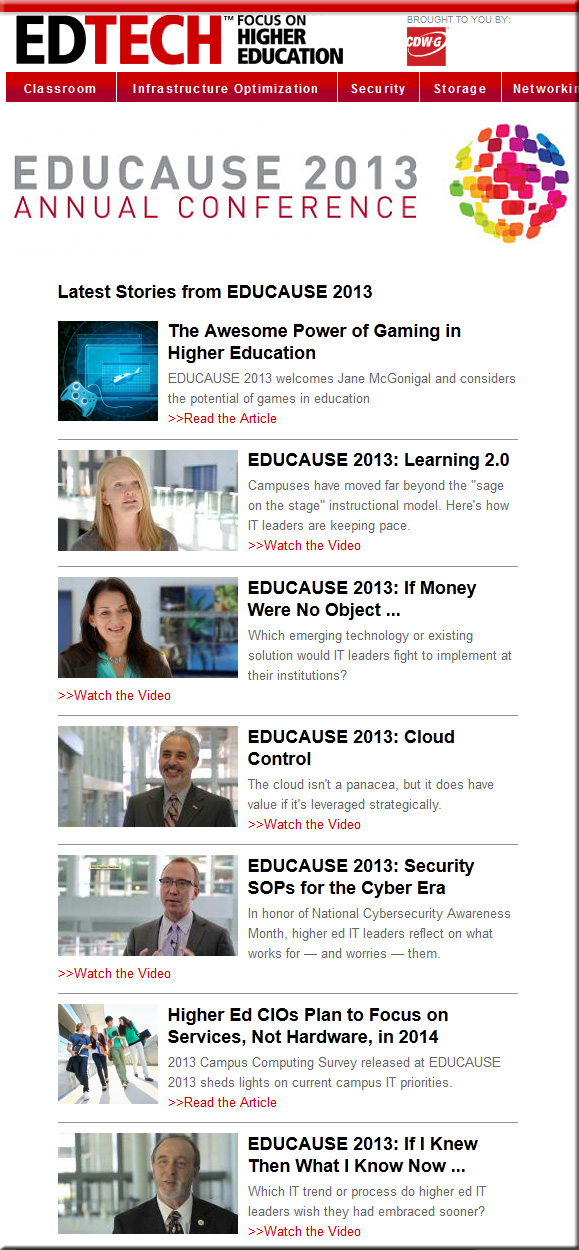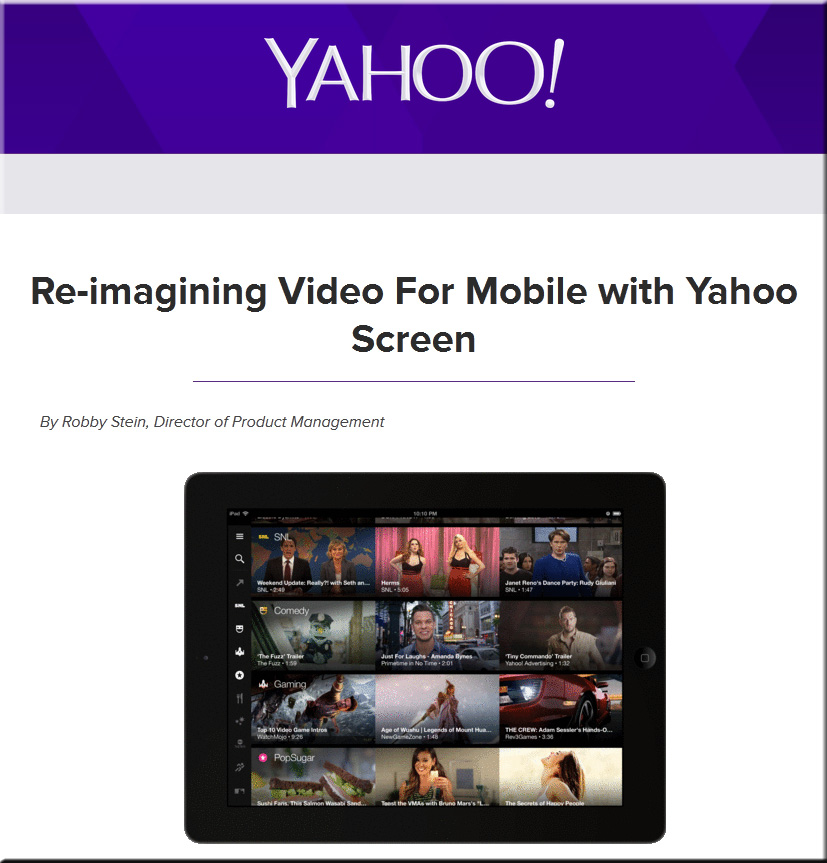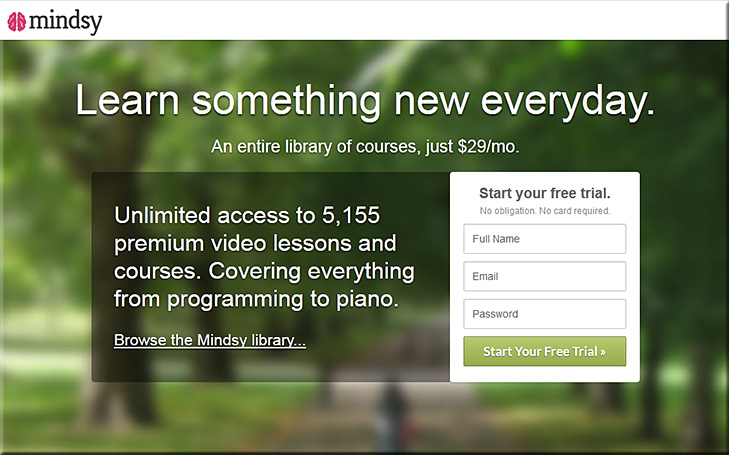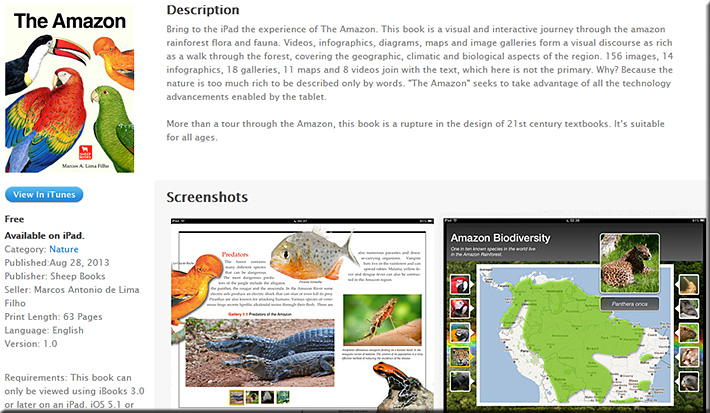



Tidebreak Next Generation Mobile App Powers Full-Participation Learning — from digitaljournal.com
Excerpts (emphasis DSC):
Mountain View and Anaheim, CA (PRWEB) October 15, 2013
New web app increases collaboration between students and faculty in classroom in BYOD learning environments.
…
The mobile web app from Tidebreak has many new features that will help increase student participation in the classroom. New features that have been incorporated into ClassSpot, ClassSpot PBL and TeamSpot include:
From DSC:
I’m sure it’s possible, but the really fun thing here would be if students could create these things from scratch — to foster their creativity, innovation, digital storytelling skills, and their new media literacies!
Also, somewhat related:
Gartner identifies the top 10 strategic technology trends for 2014
Analysts Examine Top Industry Trends at Gartner Symposium/ITxpo 2013 October 6-10 in Orlando
Excerpt:
Gartner, Inc. today highlighted the top ten technologies and trends that will be strategic for most organizations in 2014. Analysts presented their findings during Gartner Symposium/ITxpo, being held here through October 10.
Gartner defines a strategic technology as one with the potential for significant impact on the enterprise in the next three years. Factors that denote significant impact include a high potential for disruption to IT or the business, the need for a major dollar investment, or the risk of being late to adopt.
A strategic technology may be an existing technology that has matured and/or become suitable for a wider range of uses. It may also be an emerging technology that offers an opportunity for strategic business advantage for early adopters or with potential for significant market disruption in the next five years. These technologies impact the organization’s long-term plans, programs and initiatives.
“We have identified the top 10 technologies that companies should factor into their strategic planning processes,” said David Cearley. “This does not necessarily mean adoption and investment in all of the listed technologies, but companies should look to make deliberate decisions about them during the next two years.”
…
The top ten strategic technology trends for 2014 include:
Here it is: The Top 100 Tools for Learning 2013 — from c4lpt.co.uk by Jane Hart
Excerpt:
The Top 100 Tools for Learning 2013 list (released today, 30 September 2013) was compiled from the votes of over 500 learning professionals (from education and workplace learning) from 48 countries. Here are some of the highlights from this year’s list. For a fuller analyis, visit Analysis 2013
Introducing…the Learning Dashboard — from khanacademy.org
Excerpt:
The new learning dashboard is your personal homepage on Khan Academy. The dashboard gives you an easy way to find the best next things for you to do. It has a bunch of really cool things designed to help you learn math, and soon other subjects, really well on your own or with a coach. You can access it when you’re signed in by clicking on the Khan Academy logo at the top of the page.
From DSC:
Think of the power of this in a blended learning environment! Use the dashboard to gain more choice, more control. See your progress. Then go to your teacher, professor, trainer, supervisor, subject matter expert, etc. to get guidance, extra help, etc. It also plays into what I envision in the “Learning from the Living [Class] Room” environment that continues to form in front of our very eyes.
ChemDraw ~ Favorite Things Series — from collegiatecareercoach.com by Mignon Brooks
Excerpt:
Also see:
From DSC:
I couldn’t locate the relevant information for Flick-to-Share (or did they mean Flick and Share?); however, the idea of swiping to easily and efficiently share files most assuredly is part of the future Smart Classroom. see:
Combine that with:
…and you have one powerful learning/discovering setup!!!!
The Amazon
By Marcos Antonio de Lima Filho | Master in Design | Federal University of Pernambuco – Brazil
This is a free book which is available in iBooks 3.0+ on the iPad and/or using iTunes on your computer. Marcos designed this book to take advantage of all the interaction enabled by iPads.
156 images, 14 infographics, 18 galleries, 11 maps and 8 videos join with the text, which here is not the primary. Why? Because the nature is much too rich to be described only by words. The Amazon seeks to take advantage of all the technology advancements enabled by the tablet.
Great work Marcos! Nice interactivity, use of digital audio and video, graphics, and more. Check it out!
E-books could be the future of social media — from fastcolabs.com by Michael Grothaus
Excerpt (emphasis DSC):
Both Apple and Amazon were designing e-book readers by copying the 2,500-year-old idea of books as self-contained collections of words, completely missing how readers share and discuss content online today. While most e-readers allow you to share passages or links to the book you are reading, and sites like Goodreads let you share what you’ve read, their implementations treat the book and the discussions around them as separate collections. Worse, these apps force users to venture into the distracting world of the open Internet when they want to share, making it hard to stay focused on reading.
This didn’t sit well with Berggren, so he came up with an ingenious solution: Make each and every book its own self-contained social network.
From DSC:
When people urge us to do things differently due to the technologies at our disposal, this is a great example of that. It rethinks what can be done now vs. how it has been done in the past. I like the increased opportunities this type of big-thinking, innovative solution offers for increased participation, collaboration, and discussion.
Questions that come to my mind:
Also see:
.
Also see:
Addendum on 9/10/13:
Content as a Service (CaaS) — from knowledgestarblog.wordpress.com by David Grebow
Excerpt:
The etextbook in 2018 will be dramatically different than the etextbook of today. It will be coupled to an app that will provide you with Content as a Service (CaaS). CaaS will include many of the following features (and more that have yet to be imagined):
Multimedia
Simulations
Educational Games
Animations
Pre- and post-tests
Formative and Summative Quizzes
Adaptive testing
Networked Social Learning
Study groups
Analytic Datasets
Virtual and Flipped classes
Communities of Learning and Practice
Virtual classes.
Per Kara Sevensma, Assistant Professor of Education at Calvin College:
This Symbaloo includes links to iPad apps that are essential for any educator. It also provides links to recommended educational technology resources and standards/guidelines.
IBM cranks up big data analytics training programs as government continues cloud moves [infographic] — from cmswire.com by David Roe
Excerpt (emphasis DSC):
IBM is clearly concerned about the big data skills shortage. It has announced the addition of another 9 universities to its big data training program. The economic importance of the program was also underlined this week by the announcement that it has just secured a US$ 1 billion federal contract for cloud computing.
Big Data, Analytics Skills Shortages
The problem for IT giants that are currently muscling into the big data market is that the development of the technology has been so rapid the number of big data/analytics projects currently underway far outweighs the number of people that have appropriate skills.
In fact between now and the end of 2015, IBM estimates that there will be 4.4 million jobs worldwide in big data support. At the moment it is not clear where all the people required to fill these positions are going to come from.
The battle of the ecosystems: Apple, Google, Microsoft, & Amazon.com — by Daniel Christian with thanks to Krista Spahr, Michael Mandeville, Bill Vriesema, and Adam Tozer from Calvin College for their feedback/inputs on this.
Also see:
Addendums on 8/13/13:



